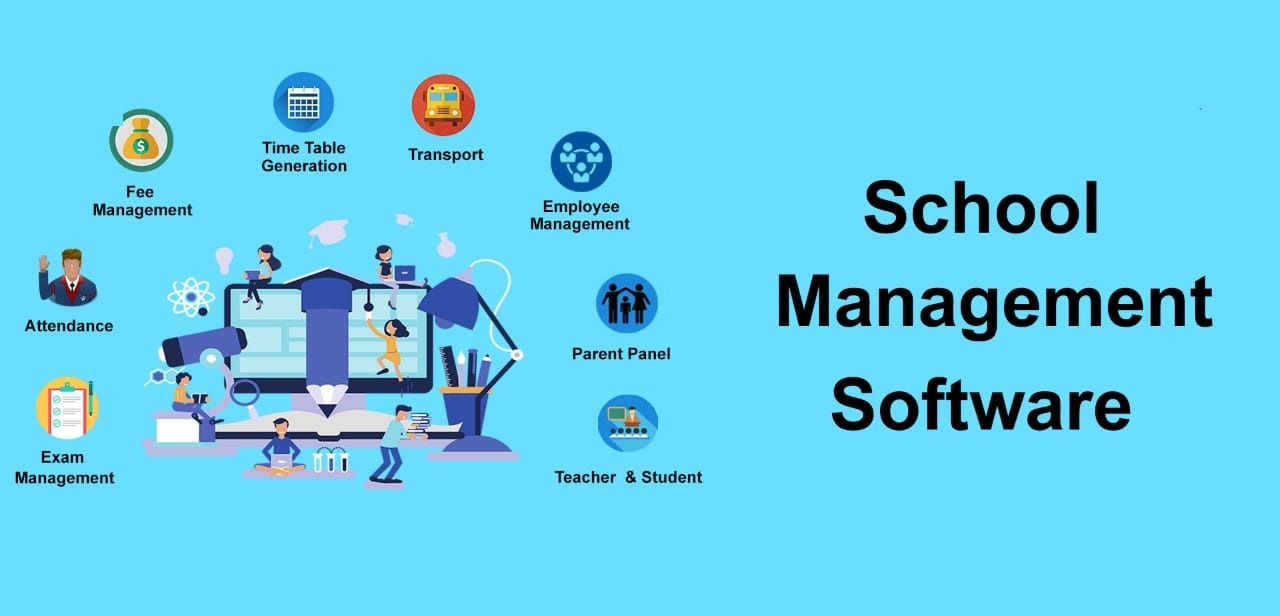School ERP – Even institutions are required to handle their functions from home because of the coronavirus epidemic, which has caused a dramatic shift in facilities all over the globe. A cloud-based school management system can help you accomplish this. Any software implementation comes with its own set of advantages and disadvantages. However, when the benefits outnumber the risks, it is generally a wise option to proceed.
The majority of schools use cloud education ERP. This is the appropriate option for educational institutions’ various requirements. Let us examine the advantages and disadvantages of such a system in the following paragraphs.
Cloud School ERP: What is it?
Cloud ERP is an enterprise resource planning (ERP) system that runs on a vendor’s cloud platform rather than on-premises networks, allowing enterprises to access information over the internet. It provides the same, if not better, capabilities as on-premises systems while avoiding the majority of the drawbacks, such as upfront licence payments.
Cloud ERP Possibilities
An enhanced student information system
Educational establishments place a premium on data storage and management. There is a requirement for more space, whether material about previous or present students. The data can be kept online and retrieved with only a few clicks using a cloud-based school management system whenever needed.
A paperless business management system
Because the same data is available on the cloud, everything previously printed and saved in files becomes obsolete. In a physical sense, this paperless technique saves a lot of storage space. There isn’t a danger that it will be harmed as well.
A time-saving technique
Running a school entails a variety of tasks. The use of school ERP software makes things like online admissions, fee collecting, virtual classrooms, assignments, grading, and even communication easier. Searching for crucial information becomes more accessible now that everything is available online. All you have to do is type in the required search terms, and the results will appear in no time.
Providing a cost-effective solution
This is a digital method, as previously stated. Furthermore, because the appropriate information can be accessed anytime needed, all critical choices may be taken on time. Human engagement is reduced, resulting in a reduced workforce. However, the school must pay infrastructure costs at the time of adoption; the overall savings over time more than compensate for the expenditure.
Effortless management
Teachers and administrative personnel can fulfill their tasks even when working from home. They make sure that students of all sections continue to study and that all activities are completed quickly. Sharing the children’s progress with their parents, making them engaged in the classroom activities, and notifying adjustments as needed are just a few of the activities that have been simplified.
Enhanced Communication
In today’s world, having an open line of communication is critical to the proper operation of schools. There must be no missed updates, and they must be shared in real-time. Online technology has become quite fast, and cloud-based ERP adoption helps to facilitate this. Teachers, students, parents, administrators, and top management are at the center of any modifications to improve school management.
Cloud School ERP Challenges
Inadequate training
To make the most of the learning management system, everyone participating in the related operations of a school must be trained. If this does not happen, the employees and teachers will be perplexed and unable to use the cloud ERP to its full potential. This must be done before installation. A representative from the service provider must be present during the sessions to ensure a seamless experience.
Choosing an incompatible cloud education ERP
Though every school has a set of tasks or functions to manage, the requirements vary depending on the size, curriculum, proportion of children, and facilities. It’s critical that you form a collaboration with the best cloud provider possible. Before contemplating such a strategy, the school’s goals must be defined. In this case, having customized functionalities is crucial.
Privacy and security of student data
In institutions, there is a wealth of data, some of which is confidential. The cloud ERP implementation’s security features mustn’t be breached, as this could lead to information falling into the wrong hands. It’s impossible to overlook the need to secure the system by limiting access to people who need it.
Finale
As you can see, the benefits of implementing a cloud education ERP system are enormous. Schools should take a phased approach so that employees are not overwhelmed by the changes and have time to adjust to the new system. The difficulties can be quickly addressed with the right solution, which is simple to use, secure, and tailored to the institution’s needs.
Get in touch with Connected IT Consulting experts to find the right ERP match for your business.
Related Links
ERP Project Management
Business Process mapping
Small Business ERP
ERP Consulting



